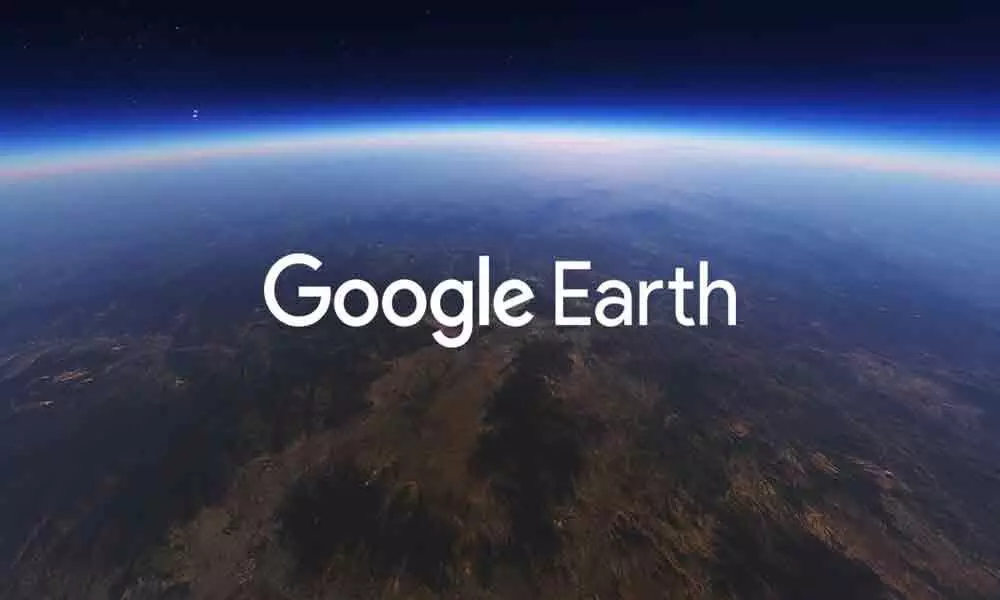Live
- Conduct Tiruchanoor fest akin to Tirumala’s: TTD EO
- Allocate Khelo India funds for sports infra in SVU
- BJP stages protests in various dists over alleged Waqf encroachments
- CM defends BPL ration card cancellation
- Industry should make use of Rs 1-trn ANRF fund: Goyal
- TTD chairman meets Telangana CM
- MITS faculty awarded with PhD by VTU
- Sannapureddy takes charge as RTC regional chairman
- Improve state of public parks, civic chief instructs officials
- Education Minister doesn’t know Kannada
Just In

Google Earth
As Google Earth turns 15, the worlds biggest publicly accessible repository of geographic imagery is not only helping billions of people better understand their world bit also supporting students in rural classrooms in India.
New Delhi: As Google Earth turns 15, the worlds biggest publicly accessible repository of geographic imagery is not only helping billions of people better understand their world bit also supporting students in rural classrooms in India.
Launched in 2005, Google Earth combines aerial photography, satellite imagery, 3D topography, geographic data, and Street View into a tapestry people can explore and take action to create positive change.
According to Rebecca Moore, Director, Google Earth, Earth Engine & Outreach, the India Literacy Project (ILP) is using the service to build interactive content for rural classrooms, helping improve literacy for 745,000 students across India.
"ILP has made history and geography come alive with new tools and media content that capture the imagination of young minds," said Padmaja Sathyamoorthy who works at the ILP.
"The project expands students' horizons. It's not just about learning a curriculum from a textbook. I believe it creates a curiosity and a love for learning that will last a lifetime," she said in a Google blog post on Thursday.
In February, Google Earth View is a collection of thousands of Earth's most stunning landscapes as seen from space, added over a 1,000 new images to its repository, which now has over 2,500 birds-eye view images of Earth's most beautiful places across the seven continents.
Mumbai's Chhatrapati Shivaji Maharaj International Airport and over 35 different Indian landscapes from Gujarat, Maharashtra and other states were part of the new set of high-resolution satellite images.
Moore said that if Google Maps is about finding your way, Google Earth is about getting lost.
"With Google Earth, you can see our planet like an astronaut from space, then travel anywhere on it in seconds with a click or tap. Even after an entire afternoon exploring cities, landscapes and stories on Google Earth, you'll have barely scratched the surface," she added.
Google Earth VR, which was released in 2016, gave people the chance to see the Earth from a new perspective.
Journalists have long used the rich imagery in Google Earth to create more engaging stories.
"Vox Video used Google Earth Studio to tell the story of how the Event Horizon telescope collected 54-million-year-old photons to take the first ever picture of a black hole," said Moore.
As millions of people struggled during the Covid-19 pandemic, Google Earth helped humanity.
During Golden Week in Japan, most people visit their hometowns, but this year that wasn't possible due to COVID-19.
"To help homesick natives, a group from Morioka city developed a tour in Google Earth that let people virtually take the bullet train to Morioka station and visit beloved locations in the city," informed Moore.

© 2024 Hyderabad Media House Limited/The Hans India. All rights reserved. Powered by hocalwire.com






